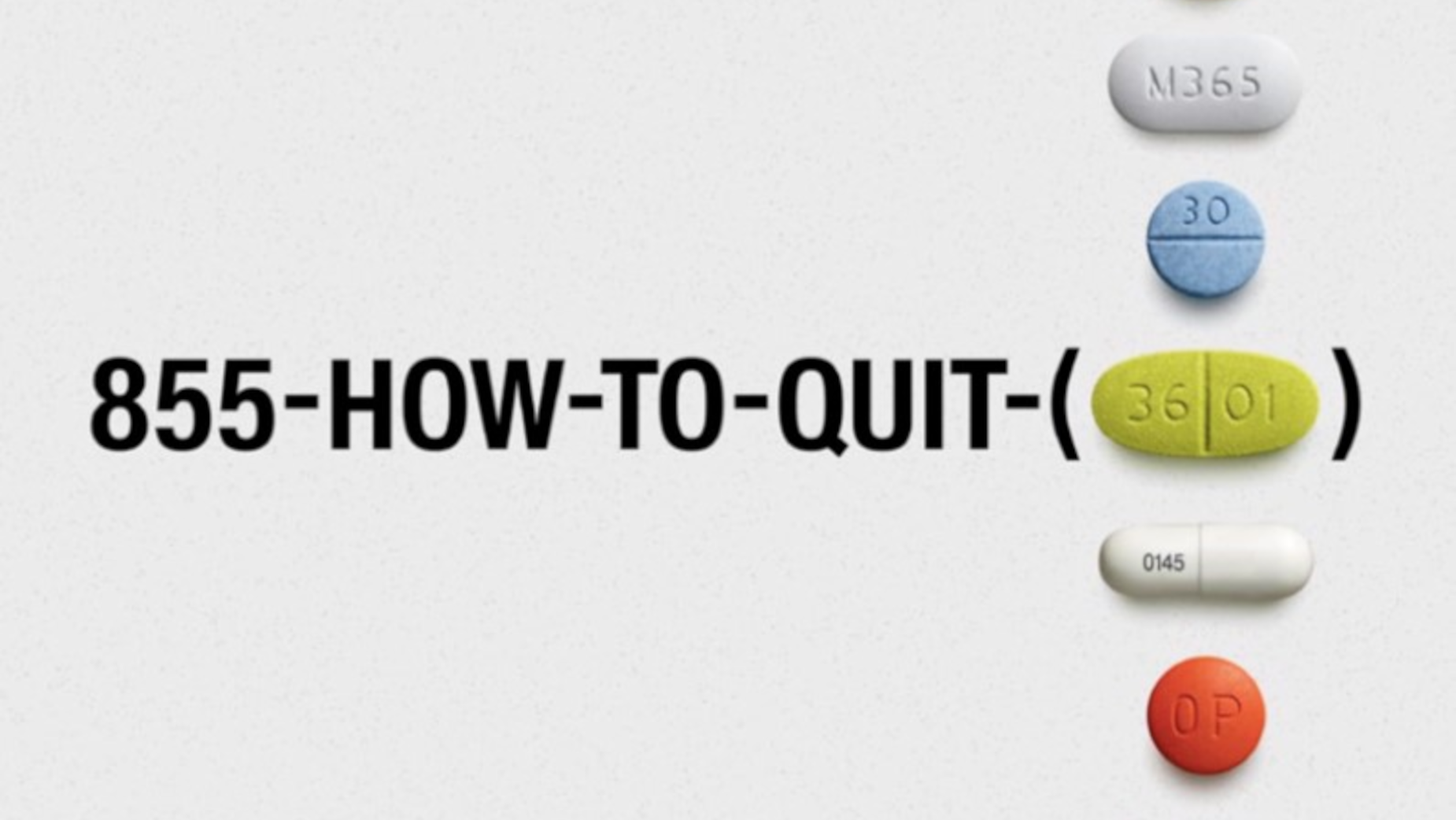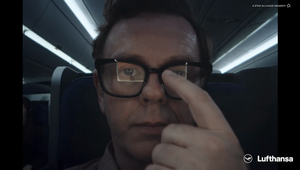
Free Addiction Phoneline Uses Opioid Pill Codes as Extension Numbers to Get Help

A coalition of NGOs, healthcare professionals, activists, media partners, and professional photographers launches an innovative approach to tackle the opioid epidemic: A toll-free helpline that uses the imprint codes on popular opioid pills as phone extensions, where people who struggle with addiction can get advice from those who managed to quit.
Turning the object of addiction into a way out
SAN FRANCISCO – Every six minutes, someone in the United States dies from opioids and today, there’s more than 2.1 million people suffering from opioid use disorder. It’s the result of an ongoing three-decade man-made plague known as the Opioid Epidemic.
855-HOW-TO-QUIT is an innovative approach to help those struggling with addiction. It’s a helpline to reach out to people in the most critical moment – when they have a pill in their hand. In the US, every pill comes with a unique identifier imprinted, such as OP for oxycodone, IP33 for co-deine, or C for fentanyl. The helpline uses the familiar dial pad mechanic where each letter corresponds to a number, to turn the opioid pill codes into phone extensions: OP is dialled as 67, IP33 as 4733, C as 2. Each ex-tension connects the caller with a different person who managed to quit that very pill.
“Peer-support increases recovery by at least 26%. Through this helpline, individuals in need are connected with others who have faced similar challenges. Seeing others who have successfully overcome addiction and are living fulfilling lives. This connection can provide a sense of under-standing that can help combat feelings of loneliness and isolation, which are common triggers for relapse or continued use.” said Erika Ball, founder and director, We Are Those People
30 pills, 30 stories, 30 ways to quit
The helpline features 30 people, reflecting the diverse demographics of opioid use disorder. They share their experiences with one of the 30 most common opioid pills, from how they became addicted to how they managed to quit. Each testimony was curated by trained addiction specialists to include import-ant medical information. The helpline also provides information for each pill, it connects to 988 for emergencies, and to the SAMHSA National Helpline for concrete treatment options. The toll-free helpline is available in all 50 states and will be functioning 24/7, initially live and later as interactive recordings.
“I’m Emily, and this is how I quit Oxy. (...) Every week I took some milligrams less, until the withdrawal hit. It’s not easy, but you can fight back with Ibuprofen, vitamins, water, food, you know, the wellness package.” said Emily, who recovered from oxycodone addiction.
“I went to a clinic and I started a MAT, medication assisted treatment. And I give them a lotta props, because the people at this place, they never judged me, they just cared for me.” said Juan, who recovered from hydromorphone addiction.
The initiative is set to launch on March 5th as a nationwide PSA campaign dis-played on billboards and other out of home media, managed pro-bono by leading OOH media company Talon, with free space provided by their media owner partners. Using data, the ads are placed in, and tailored to, the most relevant environments: in Philadelphia for example, more ads will feature fentanyl and oxycodone, while in Washington state hydrocodone pills will be more prominent. There will be billboards near pharmacies and known hotspots, and print, TV, and digital placements next to pharmaceutical ads. Activists and participating organisations will amplify the campaign further, on social media and beyond. The website 855-how-to-quit.org works as the campaign hub, featuring recordings of all stories, editorial content, resources for treatments, and various ways to support or even join the initiative.

“Besides making people aware of the problem, we also have to build and establish trust. Together with Talon, we use media to be contextually relevant in moments of receptivity: next to pharmacies and other familiar environment to those we want to help.” said Tamara Alesi, CEO, Mediaplus North America.
“Simplicity was of extreme importance in developing the visual concept. The design shouldn’t distract from the main topic - beating addiction.” said Pablo Marques, CCO, Raw Materials.
Created by a strong coalition 855-HOW-TO-QUIT is developed by a diverse coalition of organisations, from NGOs, healthcare professionals and activists, to artists and media experts. Supporters include healthcare consultancy Anzen Health, NGOs We Are Those People and PAIN, renowned photojournalist Jeffrey Stockbridge, opioid crisis expert Flindt Andersen, and known activists Pamela Smith, Sober Sammy, and Ronny Morales.

“I wish this was around when I was using. There are many ways to recover, but you have to know them. I’m proud to support this effort in making recovery more accessible.” said Samuel Huerta, a.k.a. Sober Sammy, activist.
The 855-HOW-TO-QUITinitiative was developed by Serviceplan Innovation together with their partners.















